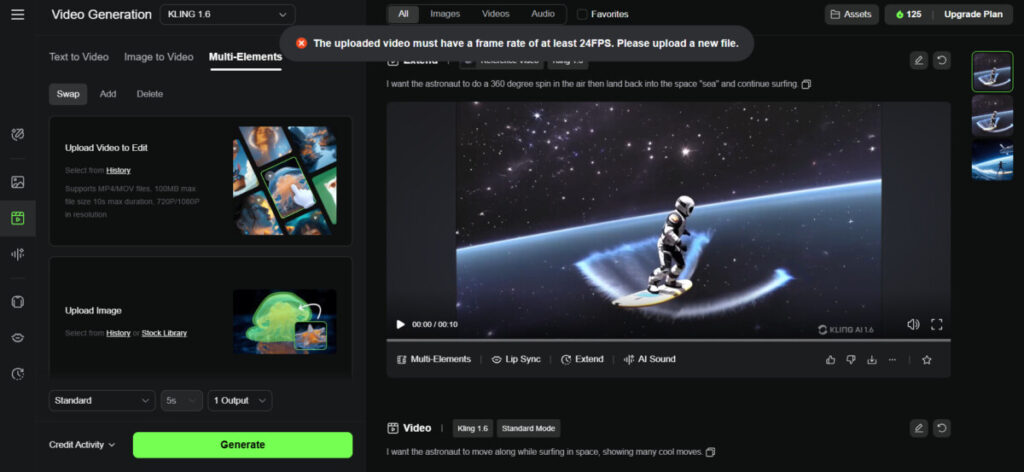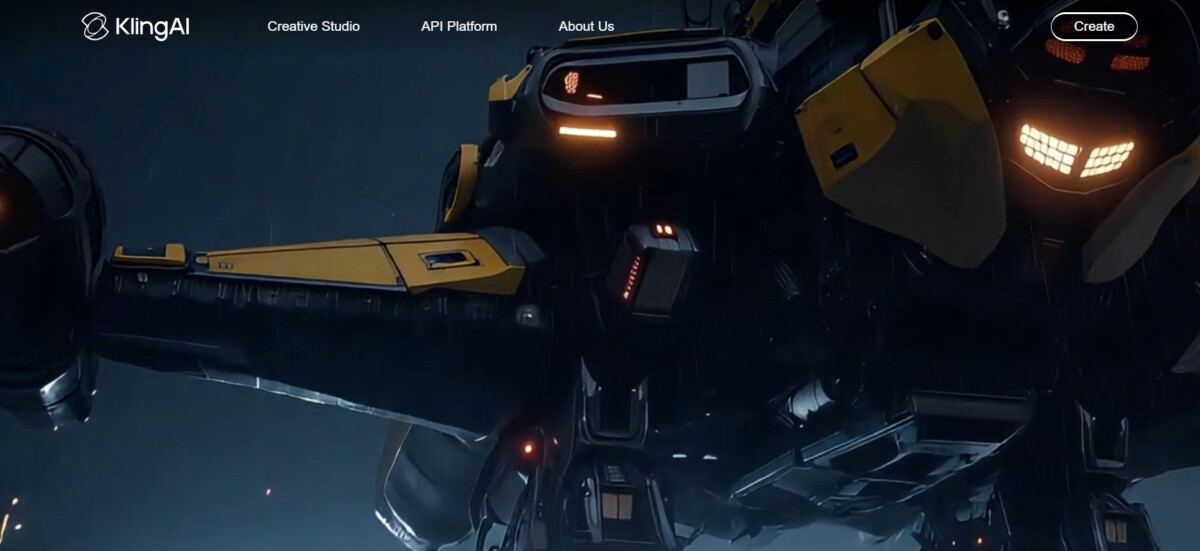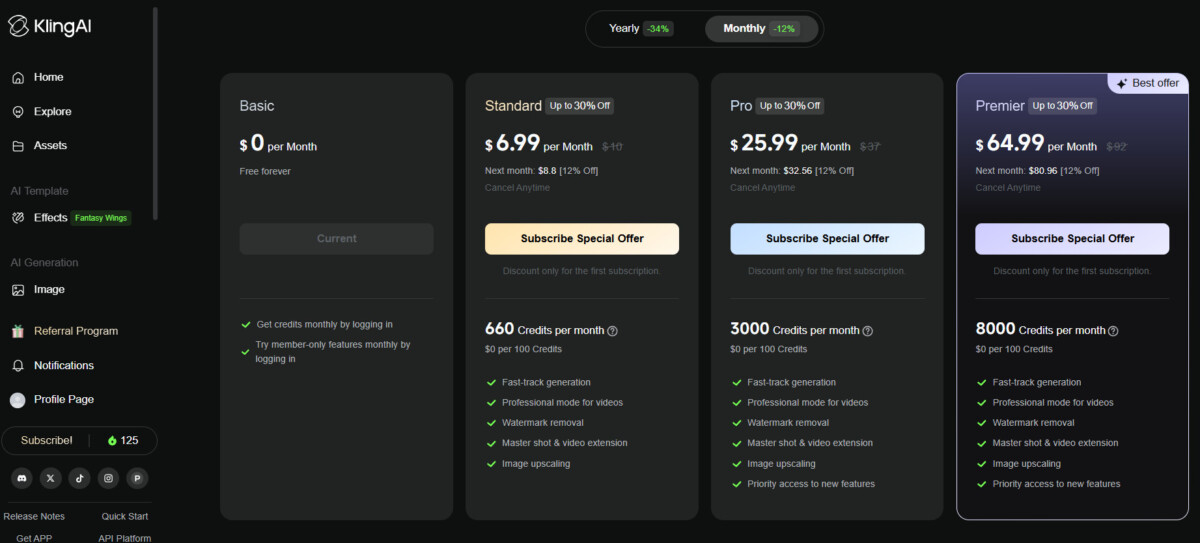In a time overflowing with generative AI tools, it’s easy to feel overwhelmed, and often underwhelmed, by the results they deliver. Many of these tools promise stunning outputs but end up delivering low-resolution, short, or lifeless content.
But Kling AI beats all other low-ball offers, or so it claims. In this review, we will tour Kling AI’s creative studio. Testing out the features, we would ascertain if Kling AI really delivers on its promise.
Main Features
1. Text-to-Video Generation
Being a creative studio, Kling AI has a text-to-video generation feature that transforms written prompts into high-resolution video (1080p videos at 30 frames per second). The video outputs are longer than normal, up to 2 minutes, providing the timeframe to tell stories with richer elements.
The video elements are coherent. Kling’s combination of 3D spatio-temporal attention mechanisms and diffusion-transformer models allows Kling to understand static imagery and how elements should move across time and space. In the end, the video features smooth, dynamic motions, free of awkward pacing.
In practical terms, this means Kling can effectively produce a video from a prompt like “a knight galloping through a misty forest at dawn”. The knight and horse will maintain temporal coherence throughout the video, through each range of motion.
2. Image-to-Video
Kling can transform still images into moving, short-form video clips. Typically, the videos (ranging from 5-10 seconds) retain the core structure of the image prompt, but with the inclusion of movement, depth, and movie-like transitions.
This feature also includes start and end-frame interpolation for smooth transitions. This defines how the image begins and ends by intelligently generating in-between frames.
The specifics of the inclusions in the video are left to the users to decide. This degree of control lets the user direct how the objects move and interact with each other. For instance, the model in an image can be directed to turn her head.
In this case, I uploaded an image of an astronaut surfing in space and prompted the AI to transform it into movement.
Note: There are two modes to select from, standard and professional.
In this scenario, I went with the default standard mode.
After clicking the ‘Generate’ button, Kling AI gave me an estimated wait time: 3 minutes.
There is also an optional negative prompt feature. This feature is basically asking you to tell Kling about the things you do not want to see in the feature.
The generated video came out well. It had a nice professional quality to it, and the prompt adherence was high.
After the process, Kling asked if I wanted to edit further by engaging other features like video extension, AI sound, or editing. I could retry the video generation process if I wanted.
3. Video Extension
Kling has a video extension feature that does the obvious: extend video clips beyond their original duration in 4-5 second increments. Basically, it stacks multiple extensions to build longer videos, up to 3 minutes in length.
Using the previously generated video, I prompted Kling AI for a video extension with the astronaut doing a classic 360 spin. Here is what the prompt looked like:
Here were the results:
4. Multi-Elements Editing
This feature lets users manipulate specific components in a scene, like the objects, characters, or backgrounds. Carefully written AI-guided prompts allow users to insert new elements, remove existing ones, or swap items with alternatives without needing to re-render the entire video from scratch.
For example, a character’s outfit can be changed mid-scene, a coffee cup can be replaced, and background elements can also be added.
However, when I tried to engage this feature using one of the videos Kling AI previously generated, I got an error response.

5. Image Generation
Kling AI has a generative AI feature that creates images from text prompts. There is also an option to use DeepSeek as guidance.
After typing in a prompt, you can adjust the number of outputs. The image aspect ratio can also be altered.
For this process, I added an image reference to guide Kling AI along the image generation process. Basically, I gave it an idea of what I want the output to look like.
After considerable time spent waiting, Kling delivered impressive results:
The Bottom Line
Kling AI is a tool that delivers impressive results. It may have some processing time, but the quality of the output and adherence to details offset the time inconvenience.



